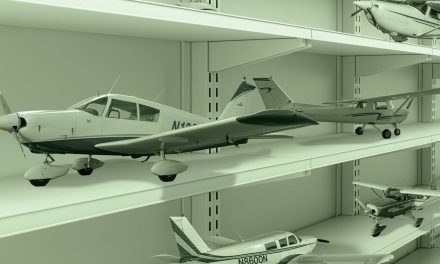By Gary Evans & Drew Coats
Aviation Attorneys
Business aircraft owners and operators may conduct non air-carrier flight operations under Part 91 of the Federal Aviation Regulations (“FAR”). Part 91 includes the “general operating and flight rules” applicable to all flight operations in the United States, including pure “general aviation” and air-carrier flight operations. The term “general aviation” includes, by definition, corporate flight operations involving turbo-propeller and turbo-jet aircraft, as well as piston powered single and multi-engine aircraft. Business aircraft owners can choose to operate their aircraft under either Part 91 or Part 135 of the FARs. Under Part 91, an aircraft owner (or lessee) is the operator of the aircraft, fully responsible for understanding and complying with the myriad legal and regulatory ramifications arising from aircraft flight operations.
Many business and corporate operators, for a number of reasons, elect to have a corporate aircraft owned by a separate corporate entity (sometimes referred to as a “single-purpose entity” or “SPE”) either wholly distinct or perhaps a subsidiary or affiliate of a larger corporation. When a separate entity is formed to “hold” a corporate Aircraft, a relationship must be established that permits the “owning” entity to convey “operational control” to an entity that requires “use” of the aircraft, especially if the “owning” entity has no independent business use for the Aircraft. The concept of “operational control”, with respect to ensuring Part 91 operations, means that the entity who is “using” the Aircraft has some contractual or ownership right to do determine where, when, and under what circumstances the aircraft is operated, and by whom. When business aircraft are being utilized, the entity making the determination as to where and when the aircraft will be flown, and with whom aboard, is the entity possessing and exercising “operational control” over the aircraft.
An essential requirement in ensuring that flight operations remain under Part 91 is to either ensure the aircraft “owner” also employs the pilots in a specific business operation, very much a traditional corporate flight department format, or to segregate the “source” of the aircraft from the “source” of the crew (what we generically referred to as bifurcation of the aircraft from the flight crew). In many flight operations, a management company may provide aircraft management and operations exclusively under Part 91, providing such services acting as an agent for the aircraft owner. Generally speaking, a company can always conduct operations under Part 91 either of its own accord or through a separate management company, without becoming involved in air carrier flight operations requiring a Part 135 operating certificate, and without a lease agreement. Generally speaking, any person or entity can “dry lease” an aircraft from an entity owning an aircraft available for leasing purposes. When a company has access to an aircraft, whether through a dry-lease or some other arrangement, it will generally contract for flight crew services through either a “flight crew services” or a “management and flight operations” type of contract. Absent an ownership interest in the aircraft, the registered owner of the Aircraft would need the foregoing lease and operating agreements to remain within the confines set forth in Part 91.
An entity that has no independent business use for an aircraft, and yet is providing air transportation to other persons and companies, is likely involved in “air carrier” type flight operations. Such operations require appropriate paperwork (including an “air-carrier operating certificate” and an approved set of “operations specifications”) from the Federal Aviation Administration (the “FAA”). Providing air carrier flight operations without meeting such requirements can result in administrative penalties imposed by the FAA of up to $11,000 per landing. These concerns are almost always present when one entity owns the Aircraft and pays the flight crew, directly or indirectly, when that entity has no other business (this is also referred to as the “flight department company” problem reflected in many of the National Business Aviation Association (“NBAA”) documents and opinions regarding this area). The potential for these administrative concerns becomes less when evaluating light aircraft flight operations (as opposed to large aircraft by definition), but are still present to some degree anytime consideration flows for the use of an aircraft and/or a flight crew. Eliminating any consideration being paid for air transportation aboard an aircraft for third parties goes a long way towards eliminating this type of concern, although it is not a complete panacea from a consideration perspective. If at any point a pilot receives some type of consideration related to operating an aircraft, even indirectly or tangentially related to the flight in question, a commercial airman certificate is almost always required to receive such compensation without fear of administrative penalty, which can become a concern even when dealing with owner-flown aircraft.
Operational control issues have become a significant and prevalent topic in connection with the FAA’s efforts, primarily as the result of high-profile aircraft accidents where the operator was either not obvious or quite difficult to actually ascertain, or where charter operations end up being conducted by those without the required air carrier certification. The FAA has also recently issued new guidance for arrangements involving operations under Part 135, whether under contract or otherwise. Under all circumstances, there should never be a lack of clarity with respect to precisely who has operational control of an aircraft at a particular moment in time or over a particular flight.
While an owner/lessee operating under Part 91 can outsource certain aspects of aircraft operations to third-party vendors, such as aircraft management companies, the owner (or lessee) remains the actual operator, retains operational control over the aircraft, including legal and regulatory responsibilities and liabilities. Operations under Part 91 cannot be conducted for compensation or hire. While an owner can lease its aircraft for Part 91 operation by a lessee, there are a host of requirements for such a lease arrangement to meet regulatory requirements, including under FAR § 91.23, in order to avoid exposing the owner (or lessee) to significant FAA penalties for illegal charter flight operations.
Under Part 135, an aircraft owner transfers possession and operational control of its aircraft to a certificated air carrier licensed by the FAA to conduct on demand charter flights under Part 135, usually by “dry” leasing the aircraft to the Part 135 carrier. Under such an arrangement, the Part 135 carrier is the operator of the aircraft, and is responsible for legal and regulatory compliance responsibilities for all aircraft operations. Operating under Part 135 is typically more expensive for the aircraft owner, which normally pays the 135 air carrier for its services, and is subject to operational limitations unique to Part 135 operations, including crew training and duty time requirements, runway and weather limitations and international operations limitations. However, an owner choosing to have an aircraft operated under Part 135 can choose to make the aircraft available for charter to third-parties in order to defray some of the cost of ownership and operation of the aircraft, although there is no requirement to make such an aircraft available to third parties. Part 135 operations are generally subject to greater FAA scrutiny and oversight than Part 91 operations, and elevated maintenance, training and operational standards, all of which typically lead to potentially enhanced safety Part 91 operations. Owners who elect to have their aircraft operated under Part 135 also enjoy significant tax advantages, including the commercial aircraft exemption to Texas sales and use tax, and a far more advantageous method of valuing commercial aircraft for Texas property tax purposes (a recurring tax the owner/operator is exposed to each and every year, unlike sales and use tax) versus methods applicable to Part 91 operated business aircraft. A full consideration and discussion of these issues is required to fully understand and evaluate all of the tax issues presented, as the exposure varies directly with the cost of the aircraft, and aircraft operations are generally expensive enough without the addition of substantial tax exposure and burden.
Historically, many business aircraft owners also weigh the Texas sales tax of up to 8.25% due on lease payments where a parent company leases an aircraft for Part 91 operations from its wholly owned single asset LLC versus the 7.5% Federal Excise Tax (FET) due where the parent charters the aircraft from the Part 135 air carrier, to whom the aircraft has been leased by the wholly-owned LLC. While other methods are available to help owners address the tax burdens associated with aircraft acquisition and ownership, such as using aircraft in a sale-for-resale (leasing) circumstance, operating aircraft under Part 135 generally results in optimum tax savings for larger dollar aircraft in many taxing jurisdictions. Lease agreements are also favored in multiple member scenarios as they eliminate confusion as to who has operational control over a particular flight, helping to shield the non-operating member in the event of a mishap. Our firm also pioneered the use of “use” types of agreements, whereby operational control of an aircraft is passed from an owning entity to a using entity, with no consideration passing between the entities, except that operational control is transferred to the user. Vagueness and ambiguity are your sworn enemies when it comes to aviation risk management, and all aircraft owners and operators should be determined to avoid any lack of specificity or clarity as to who was operating a particular aircraft, on a particular mission, and for whom.
This article does not address Standard Industry Fare Level (“SIFL”) issues triggered when a company provides an aircraft for the use of control or non-control groups of employees, resulting in attributed income to the employee equal to the value of the trip, as modified by pertinent IRS SIFL rules and rates. However, it should be noted that SIFL is an extremely economical way in which air transportation may be provided to company employees, with a lesser increase to the employee’s W-2 as imputed income. The increase in imputed income under SIFL is typically far less than it would be if the employee was assessed the actual value of the trip, for most aircraft. As this discussion shows, there are a number of widely varying mechanisms with which to establish cash flows on an as-needed basis for aircraft related operation and funding, with SIFL being one such option. This article also does not currently delving into issues arising under FAR §91.501 which sets forth a number of potentially useful options related to aircraft sharing and joint use. §91.501 historically applies only to large aircraft, by definition, although light aircraft owners who are also NBAA members may use the exemption secured by NBAA on behalf of its members as well.
The aviation industry has been working to resolve uncertainty regarding whether aircraft management services are also subject to FET. After almost a decade of discussions, legislation and rulemaking, the IRS issued a new final rule clarifying FET obligations last week. This new rule exempts payments for the Part 135 flights of an aircraft owner or lessee from FET. In order to realize this owner flight exemption from FET, the entity paying for the charter flights needs to be a registered owner of the aircraft, or a lessee of the aircraft. In Texas, while aircraft lease payments for Part 91 operations are subject to Texas sales tax of up to 8.25%, aircraft lease payments for Part 135 operations are exempt from sales tax, because of the commercial aircraft exemption. Thus, where an aircraft owner leases its aircraft to a Part 135 air carrier, the owner’s charter flights are now exempt from both Texas sales tax and FET. Until there is additional interpretation and guidance available, there is some uncertainty whether a parent company’s charter flights on an aircraft owned by a wholly-owned single asset LLC could be exempted from FET by changing the ownership structure to lease the aircraft from the LLC to the parent, which would then sublease the aircraft to the Part 135 carrier (which may or may not result in sales tax liability on the lease payments), or by having the LLC pay for the parent’s charter flights, or otherwise.
With respect to risk management issues generally, one of the greatest allies to any aircraft owner and/or operator is a substantial insurance policy with underwriters who have a reputation of properly and responsibly dealing with claims, not being reluctant to write checks when called upon to do so. In situations involving several affiliated entities and/or users or lessees of aircraft, any person and/or entity with an interest in an aircraft should appear on the policy as “insureds”. The specific nomenclature generally appears as either “named insureds”, and/or “additional insureds”. A “named insured” has all of the rights flowing to the designated owner of the policy, while an “additional insured” has rights related to specific benefits flowing from the policy, such as defense and indemnity with respect to an insured loss. Because of the importance of having the proper insurance in place with respect to all flight operations, all aircraft policies should be reviewed by someone routinely dealing and familiar with the attributes and requirements set forth herein. Under any circumstance, aircraft owners and operators should always remember that insurers are not reluctant to deny coverage if there is a failure to comply with terms, conditions, training requirements, and/or exclusions that may impact whether coverage exists for a particular loss.
If you have an interest in discussing new or potential changes to your current or proposed aircraft ownership and operational structure in order to apply common sense to your aviation and aircraft tax strategies, including taking maximum advantage of the most recent IRS ruling, please do not hesitate to contact Coats & Evans, P.C.
Sincerely,
Gary L. Evans
Mr. Evans is a native of Columbus, Ohio. He received a Bachelor of Science degree in Aeroscience from Ohio State University, and a Masters in Business Administration, with distinction, from Illinois Benedictine College. Mr. Evans received his Juris Doctorate from South Texas College of Law where he achieved the Order of the Lytae, Dean’s List, and was a member of the South Texas Law Review.
Mr. Evans is an Airline Transport Pilot with over 13,600 hours of flight experience, including over 9,500 flight hours in multi-engine corporate jets, a Certified Flight Instructor, Single and Multi-Engine Instrument, Ground Instructor Advanced Instruments, and recipient of the National Business Aviation Association’s Million Mile, 4,500, 5,500, 6,500, 7,500, 8,500, 10,000, 11,000, and 12,000 hour business flying safety awards. His flight training includes the American Airlines Flight Academy, United Airlines Cockpit Resource Management School, and Flight Safety International. He is type rated in the Cessna Citation 500/650, Lear Jet, and Boeing 737, and currently operates an award winning Piper Aerostar 700P, recipient of the Aerostar Owner’s Association prestigious “Queen of the Fleet” award for 2008 and 2015, and formerly owned and operated an Aero Commander 500S “Shrike”, an aircraft type Mr. Evans flew early in his career as a professional pilot.
Gary is married, and he and his wife Penny have four children and eight grandchildren, the youngest of which is named “Piper”.
George Andrew (“Drew”) Coats
Mr. Coats resides in The Woodlands, Texas with his wife and has two children. Mr. Coats was born in Abilene, Texas. Mr. Coats earned a Bachelor of Arts degree from The University of Texas at Austin and a Juris Doctorate from South Texas College of Law. Mr. Coats served as assistant note and comment editor for the South Texas Law Review. Mr. Coats served as a briefing attorney on the Texas Court of Appeals for the Sixth Judicial District. He also served as a judicial intern to Justice Raul Gonzalez on the Supreme Court of Texas and to the late Judge John R. Brown on the United States Court of Appeals for the Fifth Circuit.
Mr. Coats is licensed to practice law in Texas and admitted to practice in multiple federal court jurisdictions, and has been admitted to practice pro hac vice in other states. Mr. Coats completed mediation training in 2010 with mediation pioneer Professor Kimberlee Kovach, the former chair of the American Bar Association’s Alternative Dispute Resolution Section and the State Bar of Texas ADR Section. He is a member of the State Bar of Texas, former officer of the State Bar Aviation Law Section, a member of the Texas Association of Defense Counsel, the Defense Research Institute, the Aviation Insurance Association, the NTSB Bar Association and the Lawyer-Pilots Bar Association.
Mr. Coats is an instrument-rated private pilot in single engine land and single engine sea aircraft, and in multi-engine land aircraft, and has over 2,500 flight hours. Mr. Coats is an aircraft owner and operator, and serves as a volunteer pilot for Angel Flight Southeast, Challenge Air for Kids & Friends, and Pilots for Patients.






